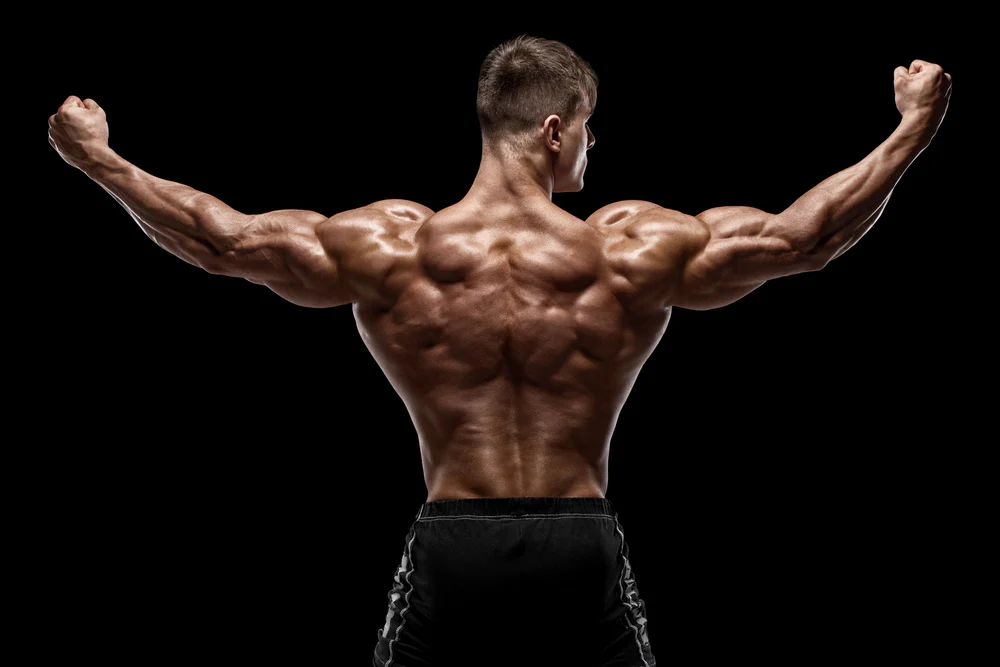In weight lifting, the lower back does not always receive much attention, unless it is injured. Experienced athletes know enough to include deadlifts, stiff legs, good mornings, glute-hamstring raises, and pull-throughs into their routine, but maybe that’s not always enough. That’s where we introduce a game-changing exercise called Reverse Hypers (aka Reverse Hyperextensions) into our training program.
The posterior chain is used in many pulling and lifting movements, so making it a priority to strengthen the lower back will help prevent serious injuries in the future. Aside from those listed above, one exercise that can help strengthen, rehab, and prehab the lower back, is the reverse hyper. Additionally, the reverse hyper strengthens the entire posterior chain including the hips, spinal erectors, glutes, and hamstrings.
Let’s take a few minutes to examine why reverse hypers are so good for you, how to perform reverse hypers, and how to execute the movement without specific reverse hyper equipment.
What is a Reverse Hyperextension?
This unique exercise and the machines on which it is supposed to be performed were designed by the legendary Louis Simmons of Westside Barbell fame. Louis developed this exercise while rehabbing from a broken vertebrae. It is designed to decompress the spine and fill the lower back with blood and nutrients.
While it would be ideal to use an actual reverse hyper machine, it is possible to whip up a modified reverse hyper using other common workout equipment. The cheapest Reverse Hyper machine is at least $800 and most gyms do not have one.
Create your own reverse hyper station.
To create a makeshift reverse hyper station, you can place an exercise ball on the end of a bench. Grab the sides of the bench to anchor yourself. Allow your feet and legs to hang straight down, although your hips are not likely to reach the full 90-degree angle because of the limitations of the equipment.


How to Perform Reverse Hypers
The reverse hyper can be performed on a flat, incline, or decline platform. The incline and decline angles should be slight, and a flat platform is almost always preferred. A slight decline will provide slightly more stimulation for the glutes and erectors, while flat and inclined are more appropriate for decompressing the spine.
It will be your choice if you use weights, bands, or a dumbbell between the legs to add resistance to the exercise. A reverse hyper machine should have all the attachments necessary to easily add resistance. Performing the exercise without a proper machine may make it difficult to add resistance, but as I always say, you are only limited by your imagination.
Essentially your upper body is lying face-down on a flat surface, with hand grips to keep yourself anchored. Your hips should be at the edge of the bench, with legs hanging free and pointed straight down, perpendicular to your body.
To perform a reverse hyper, use your posterior chain to lift your legs until they are parallel to your body – your body should form a straight line at the top of the movement. Lower your legs under control until they are pointed straight down again.
Reps: You’ll want to use sets of 12-15 for rehab and recovery. Sets of 6-8 can be used to develop strength.
Here is one other reverse hyper variation that you can try:
Reverse Hypers for Rehabilitation
I mentioned before that reverse hypers can be used to rehab from injury. This works because the eccentric movement stretches the erectors and the spinal discs. The gentle stretching helps to decompress the discs, allowing spinal fluid to permeate the spinal column and fill the surrounding area with nutrient-rich blood.
Anyone who has ever experienced a back injury knows that the circulation needs to be restored and the pressure needs to be relieved for rehab. Reverse hypers can be used 3 or 4 times a week for therapeutic work. Some people are known to use this exercise with very light weight every day just to loosen everything up.
Reverse Hypers for Building Strength and Flexibility
Reverse hypers can also be used to develop strength in the glutes and hamstrings. Most reverse hyper machines have a way to add weight, or you can use bands, or even hold a dumbbell between the legs. Holding a dumbbell is usually the least popular solution, as it adds complexity to the movement.
The reverse hyper is one of the only exercises that places the lower back under circular and horizontal load vectors. If you notice, common lower body exercises like squats, deadlifts, and lunges place only vertical load vectors on the posterior chain.
Furthermore, weighted reverse hypers help to increase hip flexor and hamstring flexibility. They are also very effective at improving glute activation. By incorporating weighted reverse hypers into your training routine, you will likely see an increase in all of your lower body lifts.
Common Reverse Hyper Mistakes
- Keep each rep slow and controlled. Do not swing your feet or use excessive momentum.
- When strength training, do not remove tension from the posterior chain by allowing the legs to point straight down at the end of each rep.
- There’s no reason to use max effort attempts with this exercise. 5 reps is about the lowest anyone should ever go.
- Make sure your posterior chain is in proper health before attempting reverse hypers. Specifically, if you have any lower back pain or known lower back injuries. If this is the case, you should consult your physician before attempting this exercise.
- An exercise ball is slightly unstable. To perform this exercise correctly, you will have to be able to stabilize yourself and maintain that stability throughout each rep.
Read more: The Top 5 Best Lower Back Exercises
Tags: back, exercise technique, glutes, hamstrings, lower back, Weight Training, weightlifting
